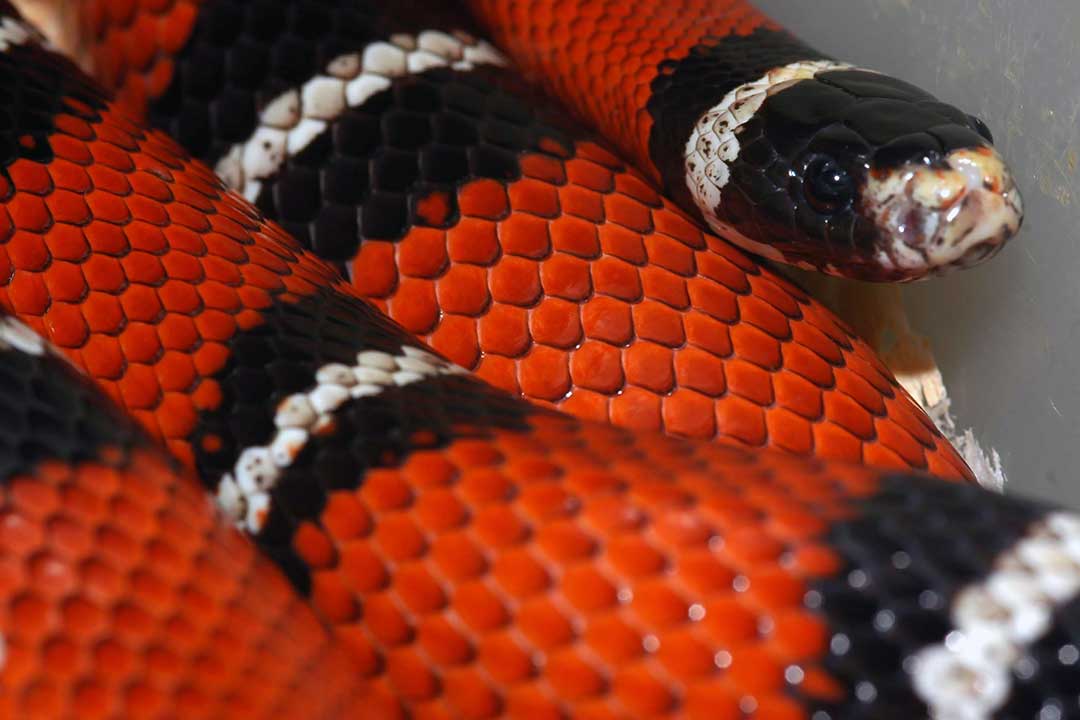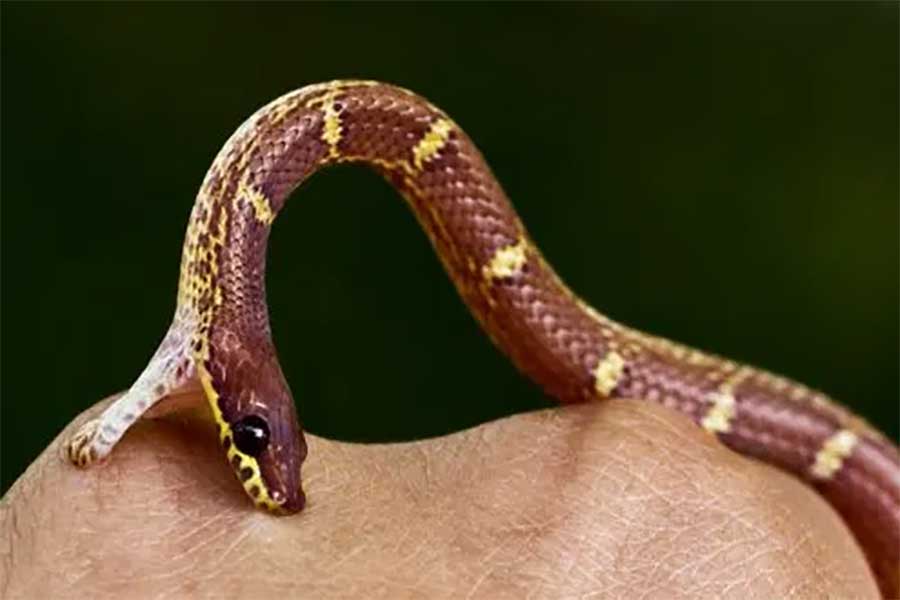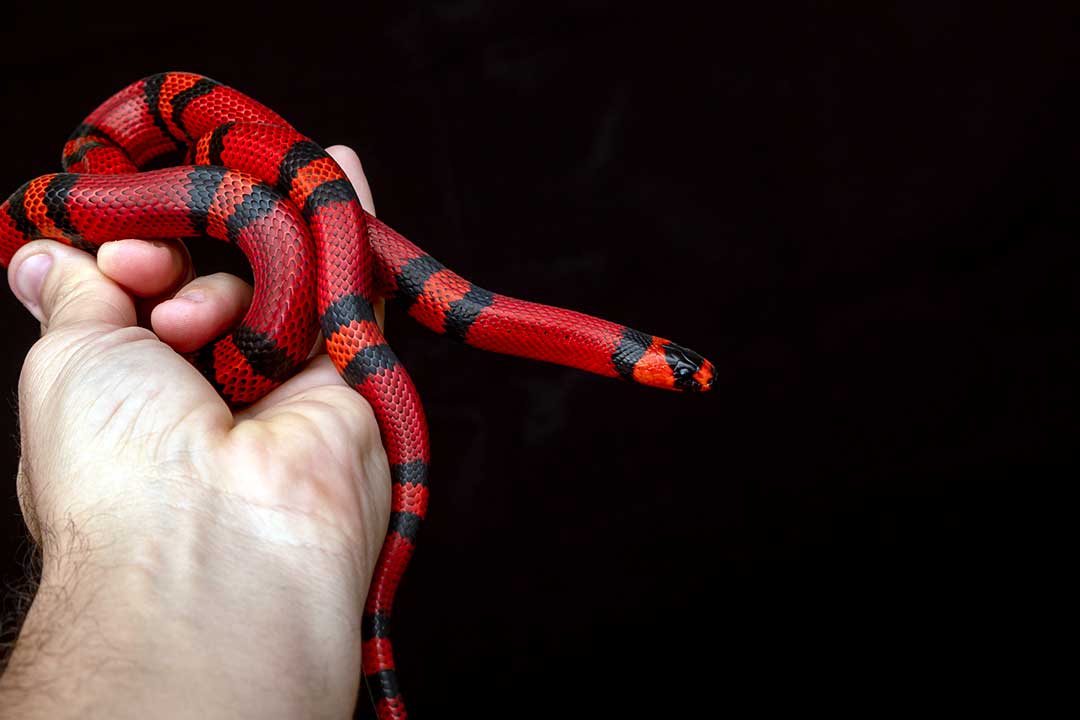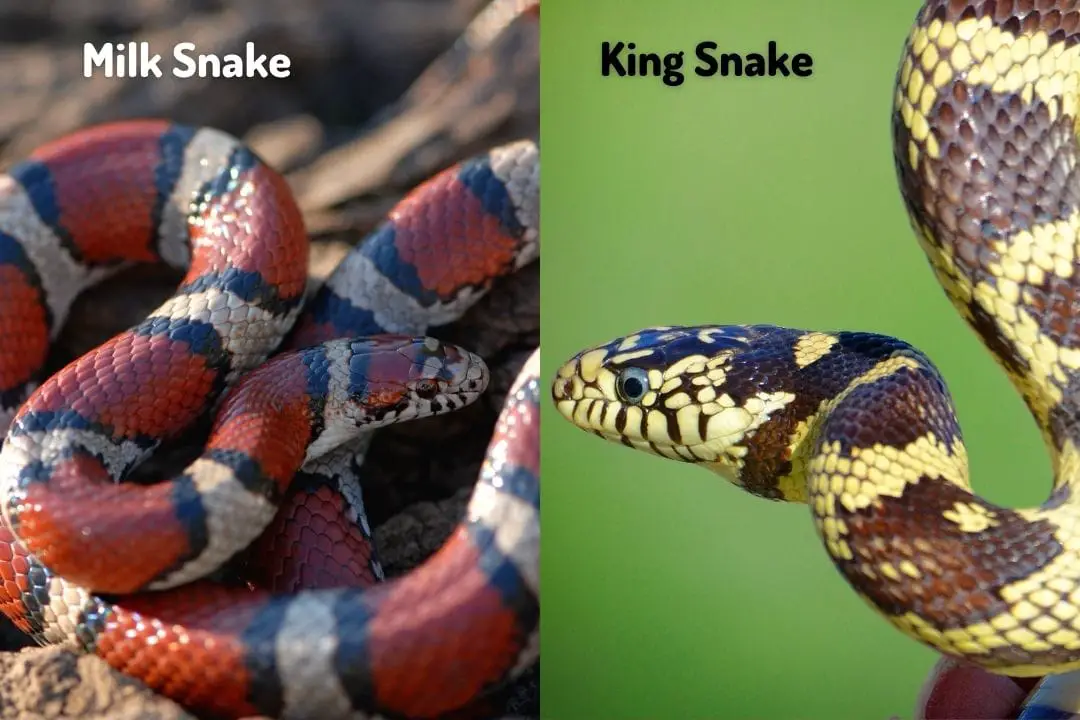Reptile lovers can all agree that snakes can be incredibly charming and alluring, but the prospect of being bitten can deter even the most enthusiastic individuals.
The milk snake species has become extremely popular as household pets, but is this fascinating and loveable snake poisonous?
Milk snakes are non-venomous, a common motive for many caregivers choosing this snake species as family pets. Milk snakes are passive and peaceful and are unlikely to bite when they are properly cared for. But, they may still attack if they feel threatened.
Whether you’re considering adopting a milk snake as a pet, or are apprehensive about spending time in an environment that houses milk snakes, rest assured that a bite from this snake species will be more shocking than daunting.
We’ve gathered everything you need to know about milk snake bites, how to avoid them, and what to do in the event you are bitten by a milk snake.
Everything you need to know about caring for Milk Snakes in captivity:
Read our Milk Snake Care Sheet (Complete Guide)
Are Milk Snakes Dangerous to Humans?
No, milk snakes are harmless, and are not dangerous to humans. This snake species adapts incredibly well when living in captivity compared with many other snake species.
Milk snakes are peaceful and docile creatures, and they typically shy away from confrontational situations since they are not territorial or aggressive to humans.
Their passive and timid nature makes them exceptionally easy to care for within a household, and they are unlikely to attack or bite humans.
However, there are a few circumstances where a milk snake may feel the urge to bite humans, and caregivers will need to consider these conditions to avoid potential hostility or incidental bites.
Defensive Behaviors
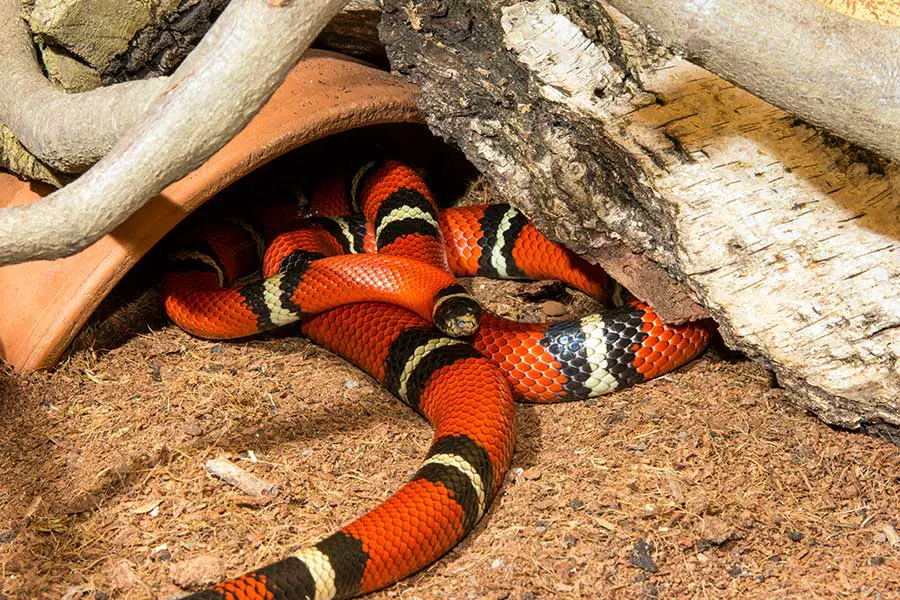
Like any other snake species, milk snakes can attack humans if they feel it is their only choice. If they are provoked, they will become defensive and may bite humans to protect themselves. Such behaviors typically decrease in probability with proper training and good relationships, but it is always a possibility that should be considered throughout their lives.
Improper Handling
Even though milk snakes appreciate gentle affection, they can become scared very easily during handling, especially when training hasn’t been conducted or when they are still developing relationships with caregivers. If they are handled too abrasively or for too long, they may become fearful and might bite humans in these circumstances.
Young or Old Age
When milk snakes are young, otherwise known as hatchlings, they can be quicker to bite. But, this behavior is not aggressive or confrontational and is more out of fear or anxiety. Milk snakes need plenty of tender love and care to develop a trusting relationship with their humans, which takes time to establish.
During adolescence, only lasting for a short timeframe, they may bite caregivers but will generally become more reclusive. Similarly, milk snakes can become moody, defensive, and may bite when they are old and nearing the end of their lives. Caregivers should always try to empathize with the milk snake throughout different stages of their lives and provide affection in ways that are enjoyable for them.
During Breeding or Shedding Seasons
Milk snakes typically become slightly more hostile during breeding and shedding seasons, and their generally timid demeanor may be replaced with tense and defensive behaviors. During these times, caregivers and companies should be wary of interaction with them as they will bite more quickly than other times throughout the year.
Hungry Milk Snakes
A milk snake may bite a human if they mistake people as feeding opportunities. Otherwise, they may become aggressive and distressed if they are hungry and desperately searching for food sources. Still, this should never be the case if the milk snake is fed appropriately and is properly nourished at all times.
Improper Feeding Tactics
It is also possible for a milk snake to bite humans completely by accident. Caregivers must provide food properly, and many owners choose to stealthily hide it in their milk snake’s enclosure for them to “hunt and find”. Never feed a milk snake with your hands, as they might strike you while grabbing their meal.
What Happens if You Get Bit by a Milk Snake?
Thankfully, anyone bitten by a milk snake need not fret for their lives, as this snake species is non-venomous and does very little damage with bites.
See the kingsnake bite video below, an adult Milk Snake bite will be very similar.
How to Treat a Milk Snake Bite
Still, those bitten by a milk snake should not brush it off, as there are many other risks concerning a milk snake bite. Persons will need to clean and sanitize the bite area to kill any bacteria that may have been passed on. Medical attention is generally not required, but persons should seek professional assistance if the bite does not heal, becomes infected, or worsens with time.
Why do people and animals think milk snakes are poisonous?
Milk snakes are infamous for their use of mimicry as a kind of defensive strategy, which is a common reason why many people and animals assume it is venomous.
Their genetic design is primarily a result of their survival in the wild and would traditionally be used to deter predators.
The predominant factor of mimicry in milk snakes concerns their appearance, as their distinct patterns and colors closely resemble venomous snake species such as the coral snake or copperhead snake.
Although the tactic is useful in the wild, it has sadly lead to many milk snakes being attacked or killed in “self-defense”, as onlookers have mistaken it for a deadly snake species.
See my article about how to help tell venomous from non venomous snakes.
Do Milk Snake Bites Hurt?
A bite from a milk snake will certainly be painful but won’t be excruciating or threatening for humans, and will not be nearly as painful as a bite from many other snake species.
Their bites inflict minimal to no injury and frequently cannot even penetrate the surface layer of the skin since they have no fangs and no visible teeth.
Milk snakes still have teeth, but their teeth point inwards, which helps them grip their prey and swallow it. But, the milk snake’s teeth are not genetically attuned to biting to inflict severe damage since they would typically strangle prey with their coils before consuming it in the wild.
Even though milk snakes are commonly mistaken for dangerous snake species, they are harmless, gentle, and passive creatures that love to be loved and adore human relationships.
Always ensure that you empathize with milk snakes, consider their temperament when handling them, and avoid them if you’re unsure of their mood to evade potential bites.
